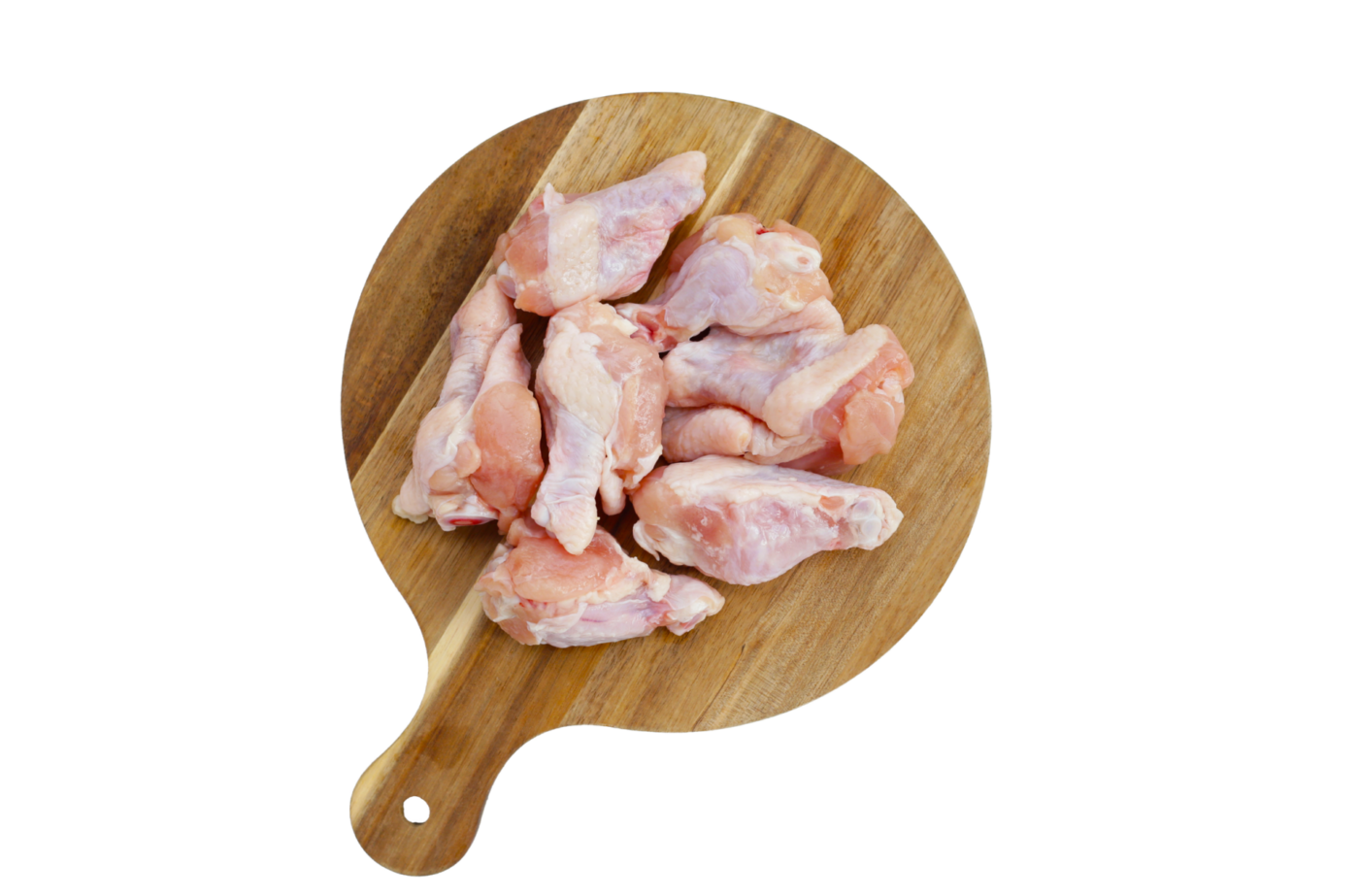Read More: Nutritional Information on Chicken Bottom Wings Drumettes
Protein: A Solid Source for Muscle and More
Chicken drumettes, like other chicken parts, are a good source of high-quality protein. Protein is essential for a multitude of bodily functions:
- Muscle Building and Repair: Protein provides the amino acids necessary to build, maintain, and repair muscle tissue. This makes drumettes a suitable option for those seeking to support an active lifestyle or increase their protein intake.
- Satiety and Weight Management: Protein is known for its satiating effect, meaning it helps you feel full and satisfied after eating. This can be beneficial for weight management, potentially aiding in reducing overall calorie intake.
- Enzyme and Hormone Production: Many enzymes and hormones that regulate crucial bodily processes are protein-based.
- Immune Function: Antibodies, the body’s defense mechanism against infections, are made of protein.
Protein Content
A 100-gram serving of cooked chicken drumettes with skin contains approximately 29 grams of protein, making them a relatively concentrated source of this essential nutrient. Even without the skin, the protein content remains high, at around 30 grams per 100-gram serving.
Fat Content: A Mix of Saturated and Unsaturated
Drumettes, being a part of the chicken wing, have a higher fat content than lean cuts like the breast. This fat contributes to their flavor and juiciness.
- Fat Composition: A 100-gram serving of cooked chicken drumettes with skin contains around 15-20 grams of fat. This includes a mix of saturated and unsaturated fats, including monounsaturated and polyunsaturated fatty acids. Skinless chicken drumettes contain less than half of the amount of fat, compaired to drummettes with skin.
- Skin’s Role: The skin is where a significant portion of the fat is concentrated. Removing the skin before or after cooking can substantially reduce the overall fat content.
- Energy Source: Fat is a concentrated source of energy, providing 9 calories per gram.
Carbohydrates: Naturally Low
Plain chicken drumettes themselves are very low in carbohydrates. However, the nutritional profile can change depending on the preparation method.
- Breading: Breaded and fried chicken drumettes will have a higher carbohydrate content due to the breading.
- Sauces: Many popular wing sauces are high in sugar, adding a significant amount of carbohydrates to the dish.
Vitamins: A Source of B Vitamins
Chicken drumettes offer a range of vitamins, particularly those belonging to the B-complex group:
- Niacin (Vitamin B3): Important for energy metabolism, supporting healthy skin, nerves, and digestion.
- Vitamin B6 (Pyridoxine): Involved in over 100 enzyme reactions in the body, including brain development, immune function, and red blood cell formation.
- Vitamin B12 (Cobalamin): Crucial for nerve function and the production of red blood cells.
- Riboflavin (Vitamin B2): Plays a role in energy metabolism and maintaining healthy skin, eyes, and mucous membranes.
- Pantothenic Acid (Vitamin B5): Involved in energy metabolism and hormone production.
Minerals: Essential for Various Bodily Functions
Chicken drumettes provide several essential minerals:
- Phosphorus: Crucial for strong bones and teeth, energy production, and DNA synthesis.
- Zinc: Important for immune function, wound healing, cell growth and division, and the senses of taste and smell.
- Iron: Drumettes contain a small amount of iron, which is important for red blood cell production.
- Selenium: A trace mineral that acts as an antioxidant, protecting cells from damage. It also supports thyroid function and a healthy immune system.
Cholesterol Considerations
Chicken drumettes, like all animal products, contain cholesterol. A 100-gram cooked drumette with skin contains around 80-90 milligrams of cholesterol. While dietary cholesterol has less of an impact on blood cholesterol levels than previously thought, individuals with high cholesterol or heart disease may need to moderate their intake.
Calorie Count: Varies with Preparation
The calorie content of chicken drumettes varies depending on factors like size, cooking method, and whether the skin is on or off.
- With Skin and Fried: Fried drumettes with skin are the highest in calories, with around 90-110 calories per cooked drumette without sauce.
- Skinless and Baked or Grilled: Baking or grilling skinless drumettes significantly reduces the calorie count to around 70-90 calories per cooked drumette.
Preparation Methods and Nutritional Impact
- Deep-Frying: This method adds significant amounts of fat and calories.
- Baking, Grilling, or Air-Frying: These are healthier alternatives to deep-frying, as they require less added fat. Removing the skin before cooking further reduces fat and calories.
- Sauces: Sauces can add significant amounts of sugar, sodium, and calories. Opting for lighter sauces or using them sparingly can help.
Making Healthier Choices
- Choose Baked, Grilled, or Air-Fried: Opt for these cooking methods over deep-frying.
- Remove the Skin: This significantly reduces fat and calorie intake.
- Go Easy on the Sauce: Be mindful of sauce portions or choose lighter options.
- Portion Control: Stick to a reasonable serving size (2-4 drumettes depending on size).
- Balance Your Plate: Pair drumettes with vegetables or a salad for a more balanced meal.
Conclusion
Chicken drumettes, while higher in fat than some other chicken cuts, are a good source of protein and offer essential vitamins and minerals. Their nutritional value can be maximized by choosing healthier cooking methods, removing the skin, and practicing portion control. While deep-fried, heavily sauced drumettes should be considered an occasional treat, baked, grilled, or air-fried versions can be part of a balanced diet. Ultimately, enjoying drumettes in moderation and making informed choices about their preparation can allow you to savor their flavor and reap their nutritional benefits. They are a tasty and convenient source of protein that can be incorporated into a healthy eating plan with a little bit of planning and mindful consumption.



Share
Click on the icons below to share "Title of the item to share"